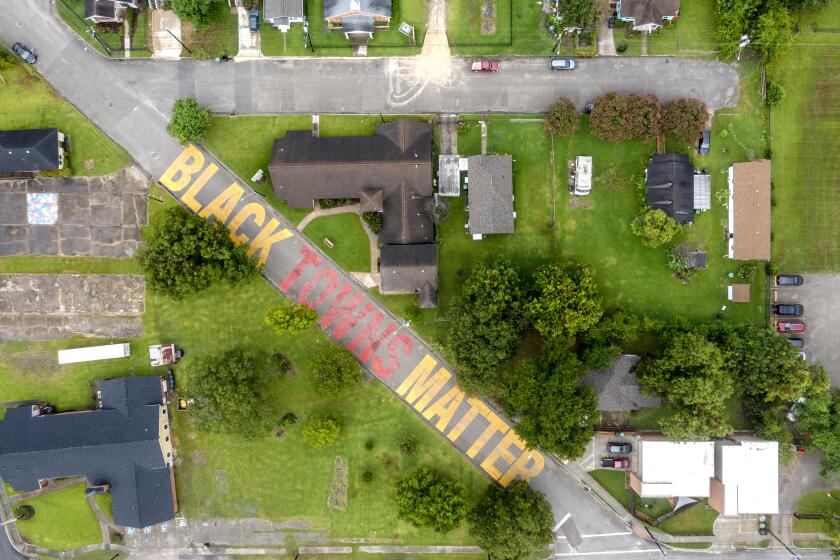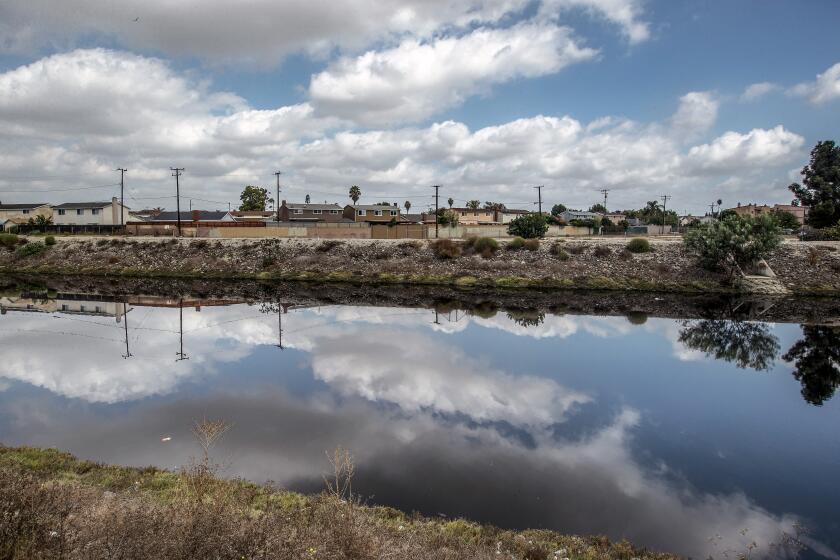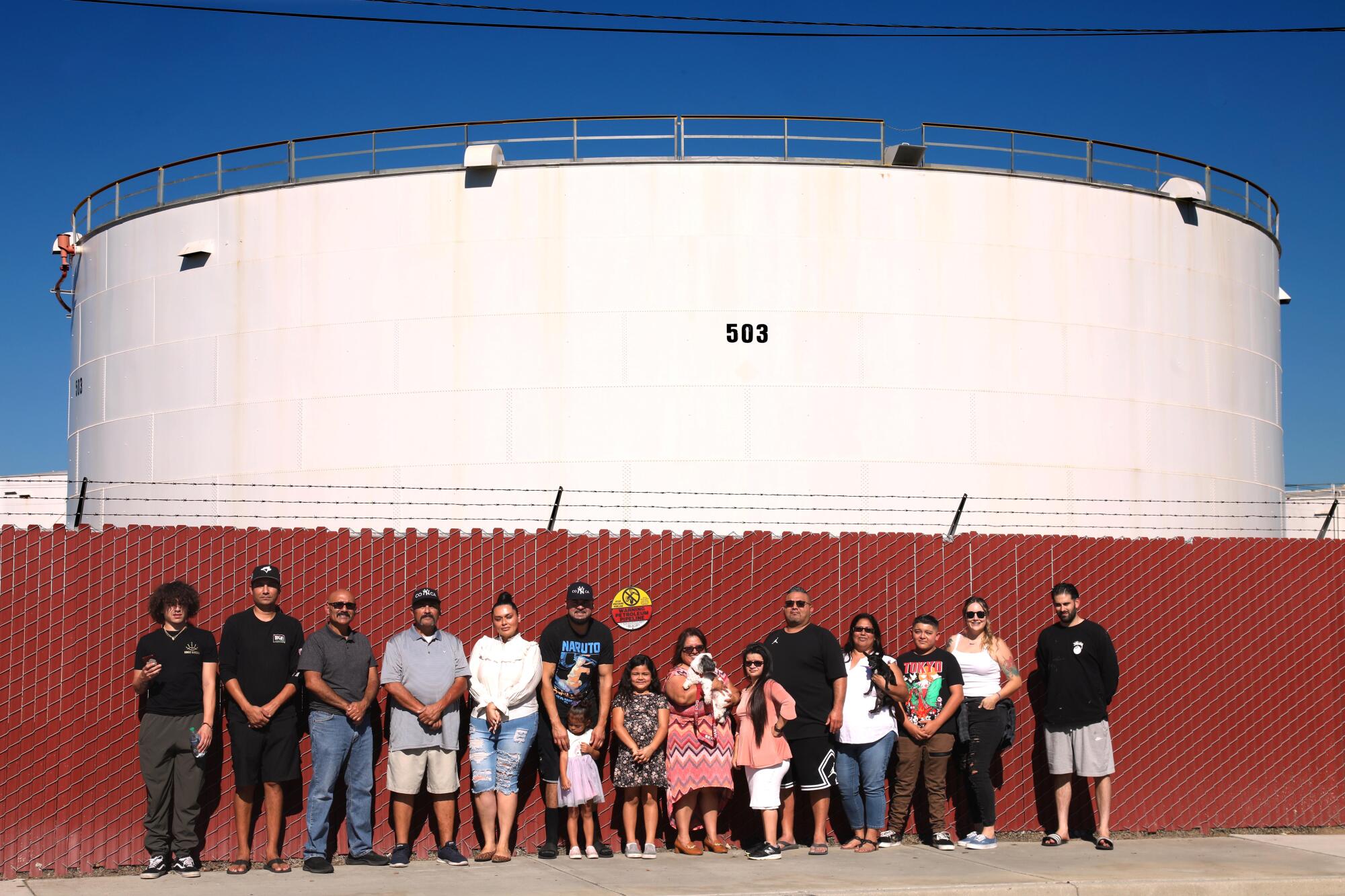
On my way to check out the big stink in Carson, I felt like I was driving into a storm of environmental hazards.
Refinery smoke rose and hovered over schools, businesses and homes. Traffic was bottled up on the Harbor Freeway between LAX and the Long Beach Airport. Big rigs hogged streets and highways, waddling to and from the nearby fume-spewing port. Oil tank farms sprouted and drill pumps by the dozens, active and abandoned, dotted the landscape.
I parked near the Dominguez Channel, which authorities believe to be the source of the rotten egg odor that began six weeks ago. I stepped onto a bridge spanning the fetid water and took a whiff. People say the stink is nothing like it was when they moved out of the area temporarily, complaining of headaches, wheezing and burning eyes. But I caught a draft of the lingering stench and covered my mouth.
“It smells like dead people,” said Tina Tucker, who told me it’s often worse at night. She has spent most of the last few weeks preparing meals at home for her family of five, including two grandchildren, then packing them to the hotel they’re staying in. That’s been a nightmarish inconvenience, she said, but she didn’t have any other options.
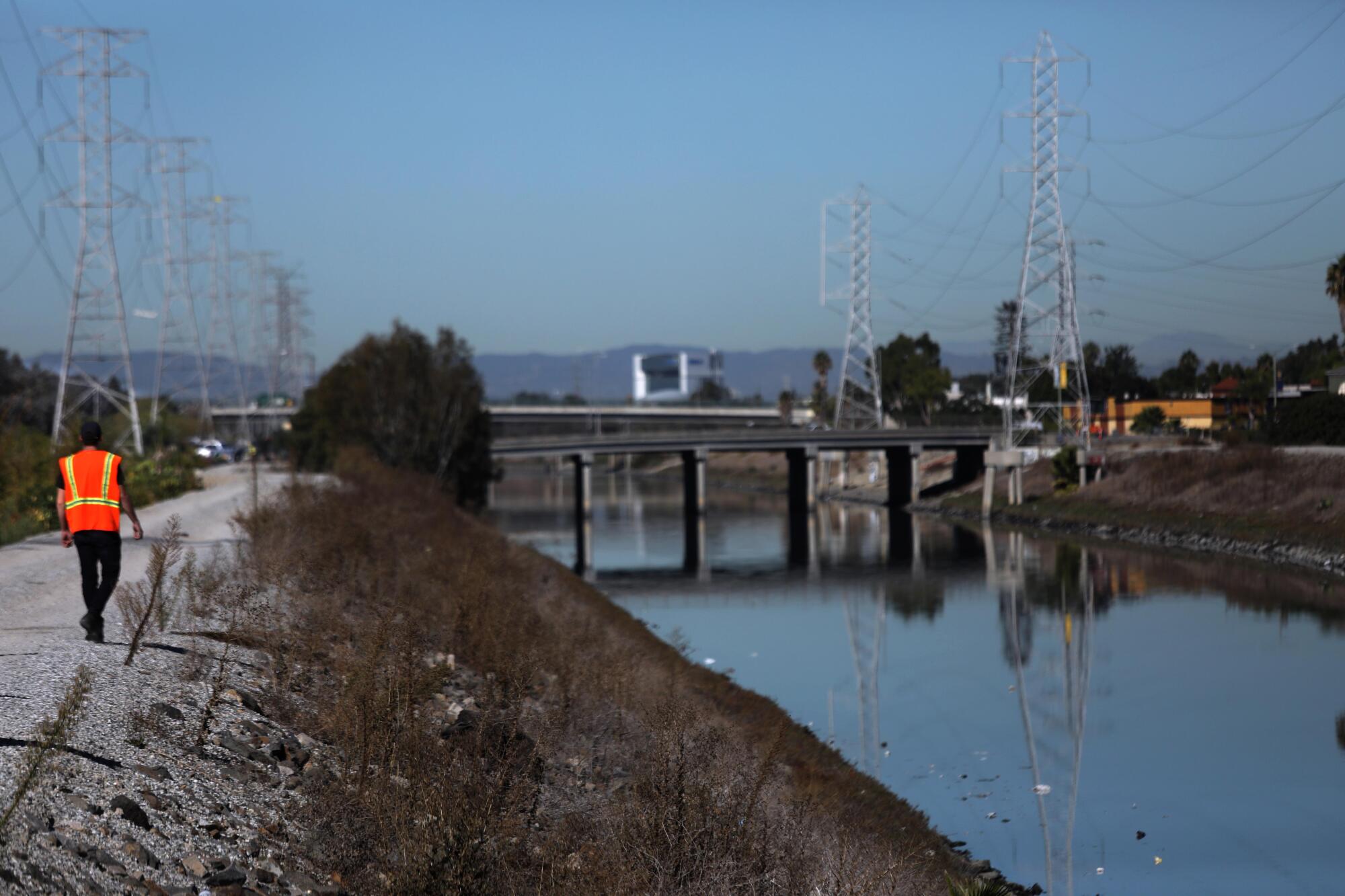
“It ain’t like it’s a little bit bad,” Tucker said. “It makes you sick to your stomach.”
At some point, presumably, the stink will be gone. But the rest of the hazards will remain, and residents are weary of it all.
“This awakened the Mama Bear in me,” said Monique Saldana Alvarez, who has been living in a Long Beach motel with her husband and three kids for weeks. She is one of many longtime residents organizing to demand answers and remedies.
America’s mid-20th century highway construction boom devastated Black communities, and now decades later freeway expansions and widenings are doing more of the same.
Alvarez grew up on 213th Street, a few hundred yards from the channel and across the street from a refinery tank farm. Her family has lived in several units at that location for decades, about 30 of them altogether.
Her grandmother died of cancer. Her late grandfather, who worked at the StarKist cannery, had diabetes. Her mother died of a heart attack at 44. Alvarez said that growing up, multiple family members had allergies and respiratory problems. It was so common, nobody gave it much thought.
Her brother, Frank Saldana, is the Carson High football coach and a longshoreman. When I spoke to him by phone, he mentioned the oil tanks a stone’s throw from his house and I put two and two together.
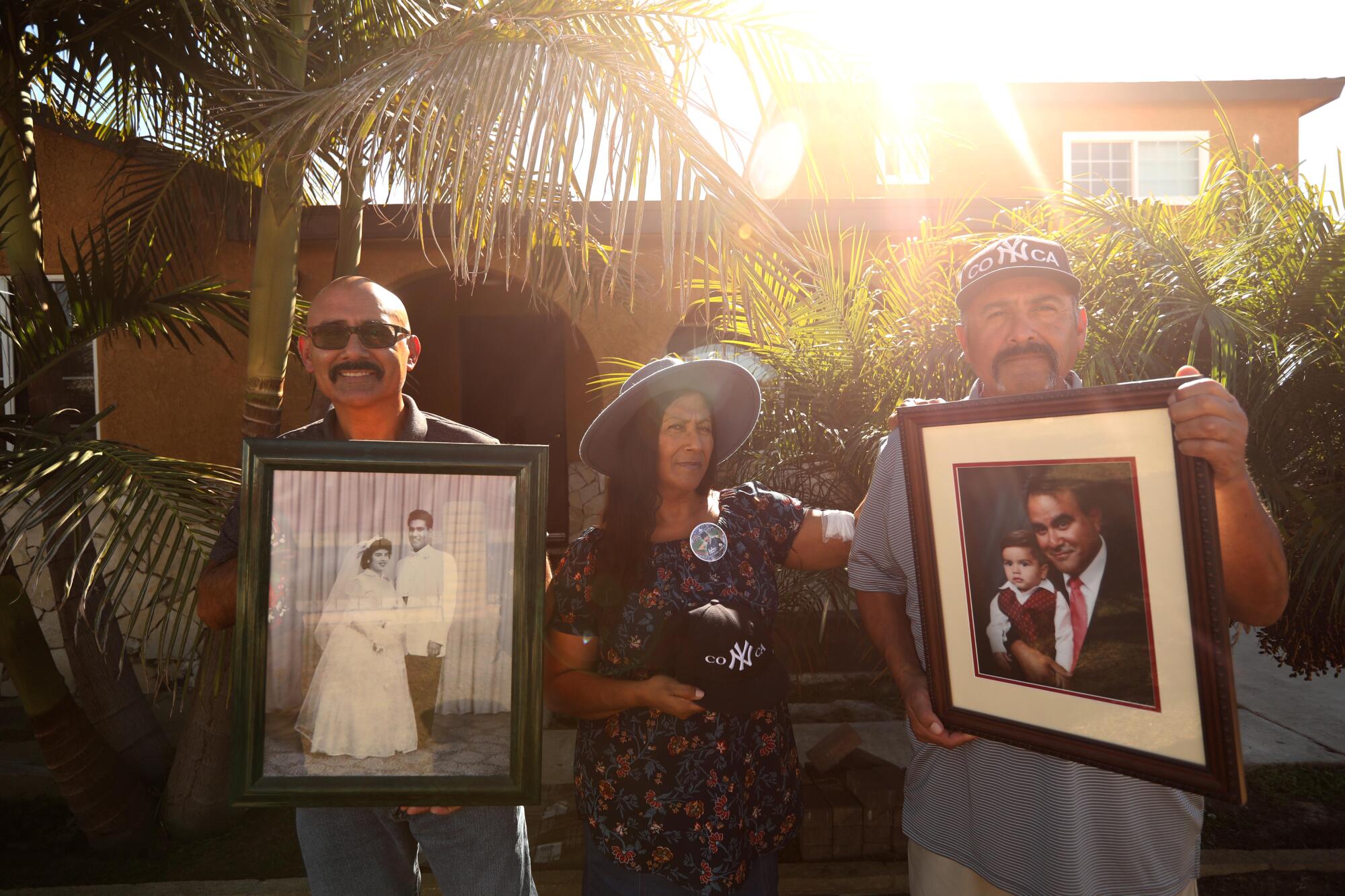
Six years ago, I wrote about a guy named Martin Saldana, one of thousands who lost their jobs when the Boeing assembly plant at the Long Beach Airport shut down. I remember visiting Martin Saldana and noting the oil tanks across the street.
“That was my uncle,” Frank Saldana told me.
Martin Saldana, who never found good-paying steady work after losing his job at Boeing, died in 2018 of complications from diabetes. He was 59.
“I always smelled gas growing up, and we always smelled crude oil,” said Frank Saldana, who has lived on 213th Street for all his 46 years.
His sister, Monique, got her first scare about the hazards of living in the area when she worked as a medical coder at a children’s hospital in Long Beach.
“I would audit physician notes, so I paid attention to detail,” Alvarez said. “The amount of children with blood cancers, respiratory issues and neurological disorders was scary.”
Overall, air quality in the Los Angeles Basin has improved over the last few decades thanks to pollution control regulations. But there’s still a long way to go, said Dr. Rob McConnell, a USC-Keck environmental epidemiologist who has studied the adverse effects of pollutants on children living near industry and roadways.
“We still have a lot of health problems and, in particular, there are pockets, like Carson, where they have higher exposure and a multiplicity of exposures,” said McConnell, who put port emissions and auto exhaust at the top of the list.
Due in part to a history of redlining, McConnell said, as well as the lower cost of housing in industrial and highway corridors, many of the most impacted areas are working-class communities of color.
“You look at Beverly Hills and there are no highways, and I think there’s a reason for that.… Some communities have the resources to stand up to these exposures and others don’t,” McConnell said.
About 75% of Carson’s population is Latino, Black and Asian. Several residents still angry that it took nearly two weeks for county crews to begin addressing the odor told me they can’t imagine such a prolonged crisis in a more affluent community.
“They told us initially it would take three to five days to clean up the odor,” said an exasperated Pamela Brown, a real estate agent whose work has all but stalled as she shuttles food and clothing between home and the LAX hotel where she is staying with four family members. “It’s like moving every day.”
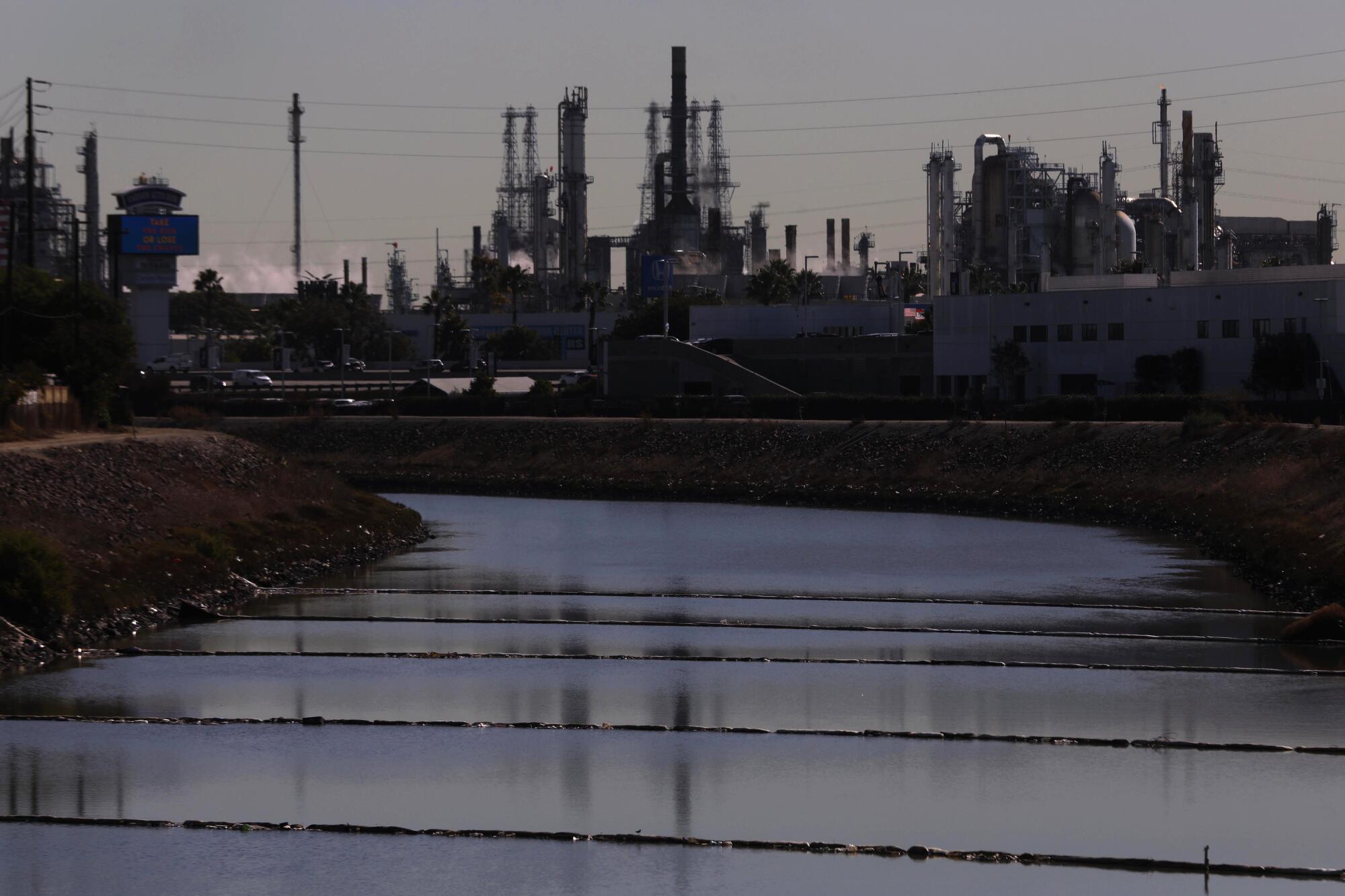
Even though the smell has abated somewhat, not everyone believes it’s safe to return home, or that the harmful side effects from what was identified as high levels of hydrogen sulfide are only temporary.
“I’m really alarmed by the levels,” said Dr. Jill Johnston, a public health science professor and colleague of McConnell’s at USC. “Not only does this have the nuisance factor, but it’s also been known to have very toxic effects on the body.”
Johnston has been part of a program called the Community Emissions Reduction Plan, made possible by legislation that brought community groups, businesses and authorities together to set clean air goals and monitor the progress. One of her associates in that effort is Jesse Marquez, founder of Community for a Safe Environment, an activist for half a century.
“I grew up on Lomita Boulevard, on the border of Carson, and the Fletcher refinery exploded across from my house,” Marquez said of the 1969 blast that killed two people and injured more than 150 others. Marquez said he and his siblings all suffered first-degree burns; his grandmother had third-degree burns.
Marquez says he’s not convinced the Carson odor is related to decaying material in the Dominguez Channel. He wonders if the 4.3 earthquake centered in Carson on Sept. 17 might have led to oil and gas infrastructure breaks, or caused the release of gases trapped near thousands of oil drilling sites, many of them abandoned.
Nahal Mogharabi, a spokesperson for the Air Quality Management District, said local, state and federal agencies are considering every possibility, but the “prevailing theory among the group” is that the cause of the stink is the “natural decay of organic material” in the channel.
Some residents have grown concerned that the investigation by local agencies has failed to get to the bottom of the mysterious odor.
As for the long-standing environmental hazards, he cited significant declines in smog and particulate matter and said greater reductions are on the way as the search continues for additional strategies to improve air quality.
What we already know, of course, is that most of the environmental hazards in the Carson area are tied in one way or another to fossil fuel consumption and to catastrophic climate change. We also know the need for a transition to alternative energy sources couldn’t be more urgent.
We are the problem. We are the solution.
When the stink is gone, Carson will still be at ground zero.
More to Read
Sign up for Essential California
The most important California stories and recommendations in your inbox every morning.
You may occasionally receive promotional content from the Los Angeles Times.

